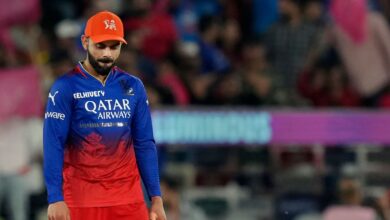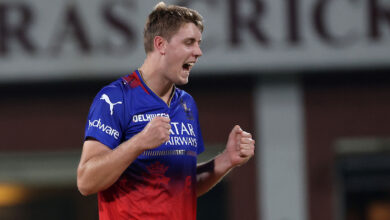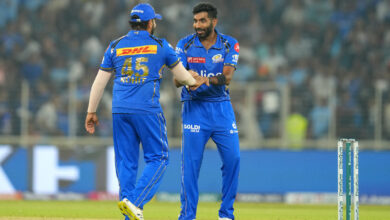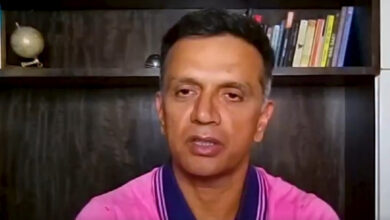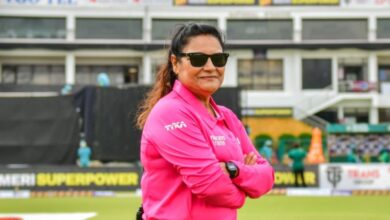How Rajasthan Royals took a leaf out of baseball playbook to power their six-hitters | Ipl News

Since the IPL became a 10-team format two seasons ago, Rajasthan Royals have slammed 351 sixes — the third most. The game-changer here is this number; nearly 29 percent of RR’s entire tally of sixes since 2008. Some of Rajasthan Royals’ brightest stars immediately impressed the in-house scouts hitting sixes during trials over the years. A young Sanju Samson’s standout shot was a straight six to a back-of-the-length ball, Riyan Parag’s six was over mid-wicket, Dhruv Jurel went over extra cover, Yashasvi Jaiswal’s ramp shot almost went all the way. But Rajasthan Royals kept their big-hitters up to date with the batting evolution in T20 cricket. They were quick to learn from baseball, using data and research to stay ahead of the curve.
“That one shot made us love what we saw from them. And it was inevitably a six,” Zubin Bharucha, the head of high performance at Rajasthan Royals, explains. “All of them came with a certain six-hitting ability.”
Sunrisers Hyderabad have reset the batting template with record-breaking totals this season, while Rajasthan Royals have shown glimpses of what they are capable of on a good day. In April, RR chased down 224 against Kolkata Knight Riders, the joint highest successful chase in the IPL before Punjab Kings bettered it gunning down 262, also against KKR, 10 days later.
Bharucha said the emphasis on hitting one extra boundary than the opposition was popularised about six years ago.“That’s when we got on the bandwagon about what’s happening in baseball. Why are they hitting the ball further? So a lot of the protocols that we adopted came partly from baseball and partly from our understanding of how you use the mechanics of the swing to hit the ball further. The bat swing is related to how your eye picks up the ball and the time from when the ball is released to when you play. A 15-year-old Sanju Samson had the same swing as he does today. What we have changed is the width of that swing — how far it is from the body, the way the elbows are set up, baseball stuff, and all that,” Bharucha elaborated.
To pick up elements from baseball, Bharucha even had all-rounder Ravichandran Ashwin travel to the USA. Hitting the ball upwards instead of flat was a key takeaway.
“We took Ashwin to Seattle to explain baseball mechanics, both in batting and bowling, with a company called Driveline Baseball. They are the guys who created a revolution in baseball where they were able to increase the home runs 50 per cent. What their research said was that in baseball, they were always hitting it flat. These guys used high technology literally in a garage and proved that it was wrong, and you hit upwards on the ball.”RR has encouraged their batsmen to experiment with heavy bats, light bats and also have been innovative with batting drills.
For instance, Bharucha says their lead batters also work on batting on the outfield to improve their six-hitting against spin. “It’s much tougher to hit the ball on the outfield. So we have bowlers bowling from 10 feet, 15 feet, etc… into the rough, and all these guys, Sanju, Riyan, Yash (Jaiswal), and Dhruv, are all trying to hit sixes from there. A lot of these mechanisms were introduced to these guys over the last few years, and you are seeing the difference now.”
Sanju Samson with Yashasvi Jaiswal. (Rajasthan Royals Facebook)
Bharucha says their batsmen have been constantly evolving targeting areas of the field with more power and timing.
“Where Sanju has improved is how he accesses the ball over long-off, over wide cover, mid-on, and mid-wicket. One part of that access point is the width of the swing, which determines how far the elbow is from the body. When you pick the bat up, you get a wider arc from which you swing the bat. While other guys may be able to play that ball to say mid-off, he may be able to hit the same ball to cover mid-off and hit it straight. The same principles and protocols are applied to each of these players,” Bharucha explained.
Bharucha has already set the ball rolling for the radical changes the game may witness over the next ten years. Integral to this has been the essence of power-hitting, which even upgraded a 38-year-old Dravid’s power game in his final few IPL seasons with the Rajasthan Royals.
Rahul Dravid’s example
“There is a lag to the swing. The hips move first, and the body follows. It is like a golf swing where you generate power. Rahul Dravid is a classic example. Right at the end of his career, when he came to us, he started slogging and hitting big sixes over long-on and mid-wicket. That’s a great example of somebody who’s never played that shot before coming into the Royals and learning that stuff.”
What is in the offing over the next few years?
The top six of a batting order striking at a 150-plus strike rate every game, believes Bharucha. “With two fielders outside the circle, you should be scoring 65-70 runs every powerplay. You can’t suddenly say you’re going to score 50 or whatever. It’s just not good enough. If you have six players, all of them need to go at a 150-strike rate. That’s your template for the future. That’s where we are trying to stack up players who go at that clip. It’s not easy, but that’s the vision. That is the future.”
Learning and unlearning have been integral to Bharucha and the Rajasthan Royals, who are gunning for their first title in 16 years.
He talks about how batting philosophy has changed since a decade ago.
“We have to go 10 years back to the Rahul Dravid era. As data started coming on board, we engaged with Cricket-21 (an analytics company) from Chennai back in the day. In the early stages of that evolution of data, it would throw out things like, ‘It’s better to be 45 for no loss in the powerplay rather than 60 for 2.’ That’s where we went and acquired Dravid back in the day. So you had a situation where you wanted to hit the ball along the ground, whereas RCB had Chris Gayle, and they were getting to 65 but used to lose three wickets and ended up losing, for example. We started with 45 for no loss. Now we are talking about 65–70 in the PP. We are talking about the power game.”



